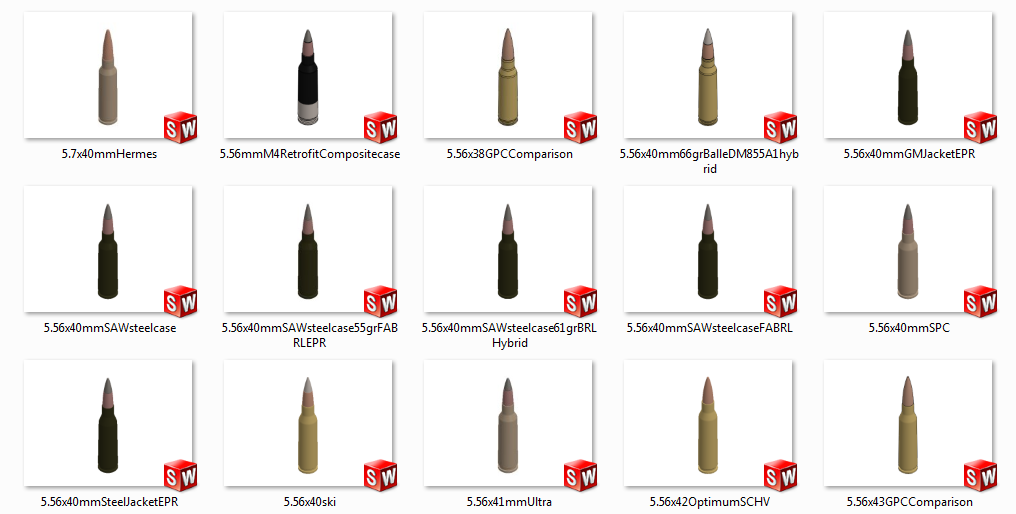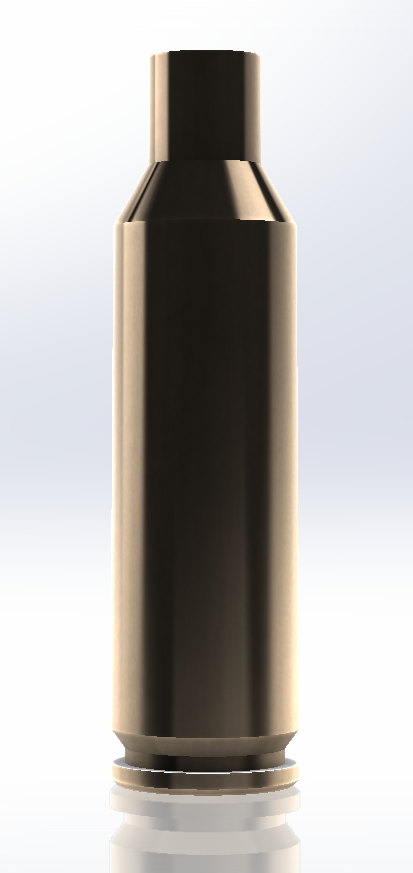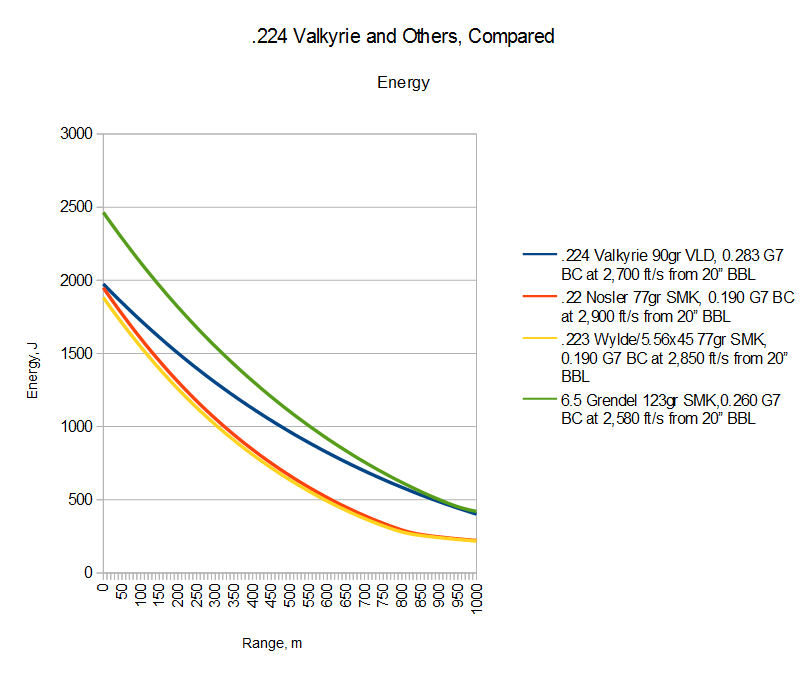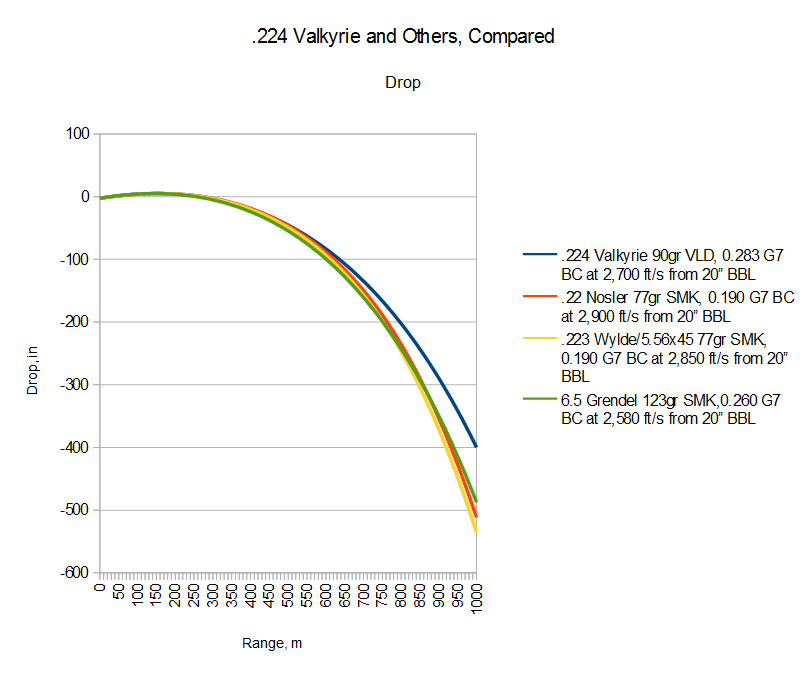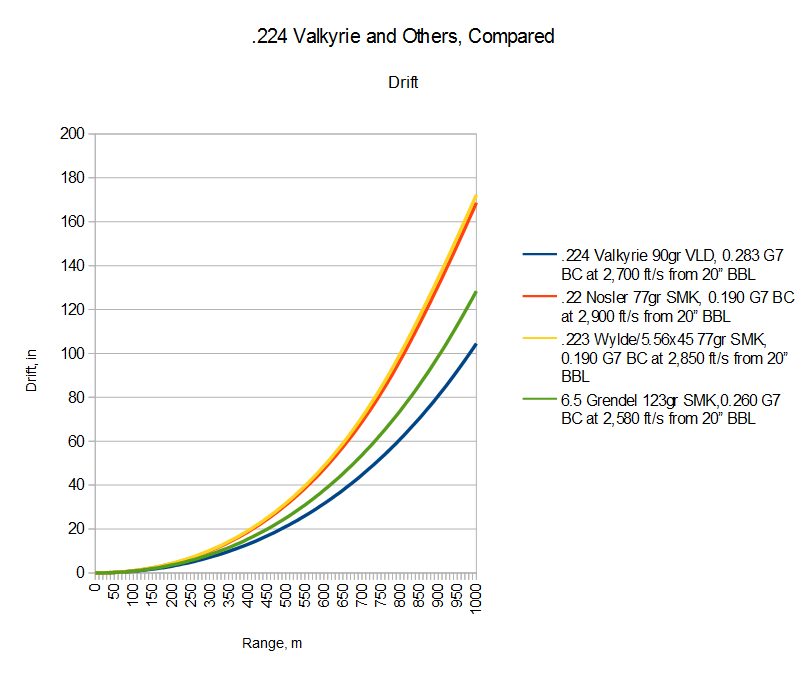Let’s start off with a question: What is the best round for the AR-15?
At the Big 3 East conference this week, a new caliber was unveiled for the AR-15. Called the “.224 Valkyrie”, it is based on the .30 Remington/6.8 SPC case, necked down to .22 caliber, giving it similar internal and external geometry to the .22 Nosler, released at SHOT Show this year. However, as we’ll see the Valkyrie really is a different horse, and could re-write the landscape of alternative rounds for the AR-15.
My interest in the .224 Valkyrie was pretty immediate, because it was an obviously good design in a way that the .22 Nosler is not. Where the Nosler was designed for case capacity over everything else, the Valkyrie couples a good case with ample space for a slender projectile ogive. This design was the secret “sauce” behind the 6.5 Grendel, 5.45×39, 6.5×55, and many other successful high performance rifle rounds. The Valkyrie was going to have good performance, I knew, because I’d been toying with the same concept for years: Good relative capacity, plenty of ogive space, with a .22 caliber projectile in a format that works in the AR-15.
Although Federal has not released its spec sheet yet, the .224 Valkyrie appears to have a case that is about 1.62″ long, with an 0.240″ long neck. The shoulder is almost certainly 30 degrees (as is popular at the moment), and the case taper is probably similar to .308 at about 0.35 degrees per side. Since I already had a 6.8 SPC case model laying around, this made modeling the .224 Valkyrie in SolidWorks pretty straightforward:
This case model has a capacity of 34.5 grs H2O (2.23 ccs), which is just a bit short of the .22 Nosler’s 35.8 grains (2.32 ccs) or so. The case model’s weight is 6.92 grams. This means, with a 90gr bullet and a 29.6 gr powder charge, the .224 Valkyrie is clocking in at right about 14.9 grams in weight. This is definitely on the lighter end of the scale for AR rounds, though it is still 24% heavier than 5.56mm, thanks mostly to the heavier projectile.
Obviously, the Valkyrie competes directly with the 5.56mm/.223 Remington and .22 Nosler in the .22 cal AR-15 rifle cartridge bracket, but, well, the ballistics really tell the whole story here:
Well then, that sure seems definitive, doesn’t it? The .224 Valkyrie has 5.56mm Mk. 262 beat for velocity by 200 meters; the .22 Nosler it has whupped by 250 meters, and all with a bullet that’s 17% heavier. In terms of muzzle energy, it leads the pack of .22s to start, but clings bitterly to every Joule to such a degree that by a kilometer it’s even nipping at the heels of the much-touted 6.5 Grendel. Yet, where the Grendel disappoints in drop and drift, the Valkyrie pulls ahead, earning a massive lead in drop and drift over everything on the chart by the time kilobuck range rolls around. (In fact, although not included on the chart, the .224 Valkyrie approaches the 6.5 Creemoor in both respects at this range).
So, wait, the .224 Valkyrie is an AR-15 compatible round that gives you .22 Nosler performance up close, 6.5 Grendel energy retention, and 6.5 Creedmoor drop and drift at 1,000m? Well, these are just estimates, but… Yeah, looks that way.
Now, all they need to do is make a direct impingement SASS rifle in the Valkyrie that uses the Magpul Six8 PMags for that full, glorious 2.3″ OAL. Then we’ll really be cooking with gas.
And, hey, Federal? DON’T CHANGE THE NAME!!!
 Your Privacy Choices
Your Privacy Choices

